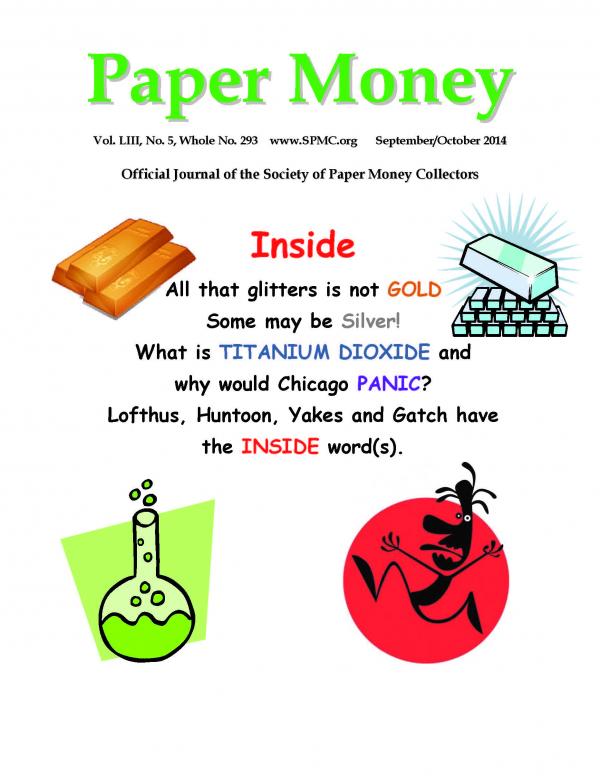Please sign up as a member or login to view and search this journal.

Table of Contents
ANA Honors SPMC Stalwarts.....................................................315
Release & Survival of 1933 $10 Silver Certificates.....................316
The Paper Column-$10,000 Gold Certificates.............................322
The New Zealand Banknotes of 1940..........................................331
Chicago Panic Scrip of 1907........................................................338
Small Notes--Titanium Dioxide $1 Experimentals........................346
Uncoupled-Souvenir Notes...........................................................348
Early Bank Charters Still Surviving...............................................354
Rarity Plus Beauty Equals Excellence..........................................358
Smallest Town to House a National Bank--Probably....................361
Why Do Humans Refuse to Learn from Our History.....................370
Chump Change.............................................................................373
President's Column........................................................................374
Tweet
More like this
- Paper Money- Vol. LVI, No. 5- Whole No. 311- September/October 2017
- Paper Money- Vol. LIV, No. 5- Whole No. 299- September/October 2015
- Paper Money- Vol. LV, No. 5- Whole No. 305- September/October 2016
- Paper Money- Vol. LVII, No. 5- Whole No. 317- September/October 2018
- Paper Money- Vol. XIV, No. 5- Whole No. 59- September- October 1975

